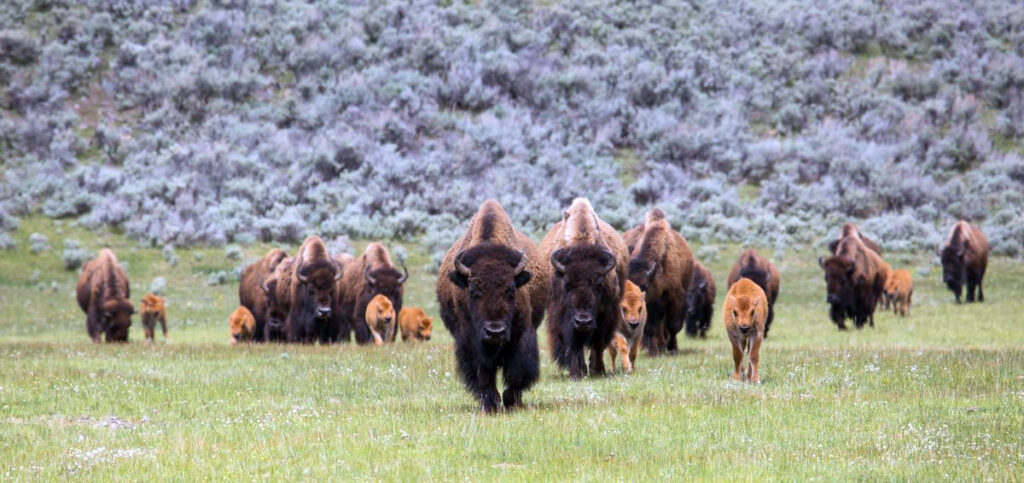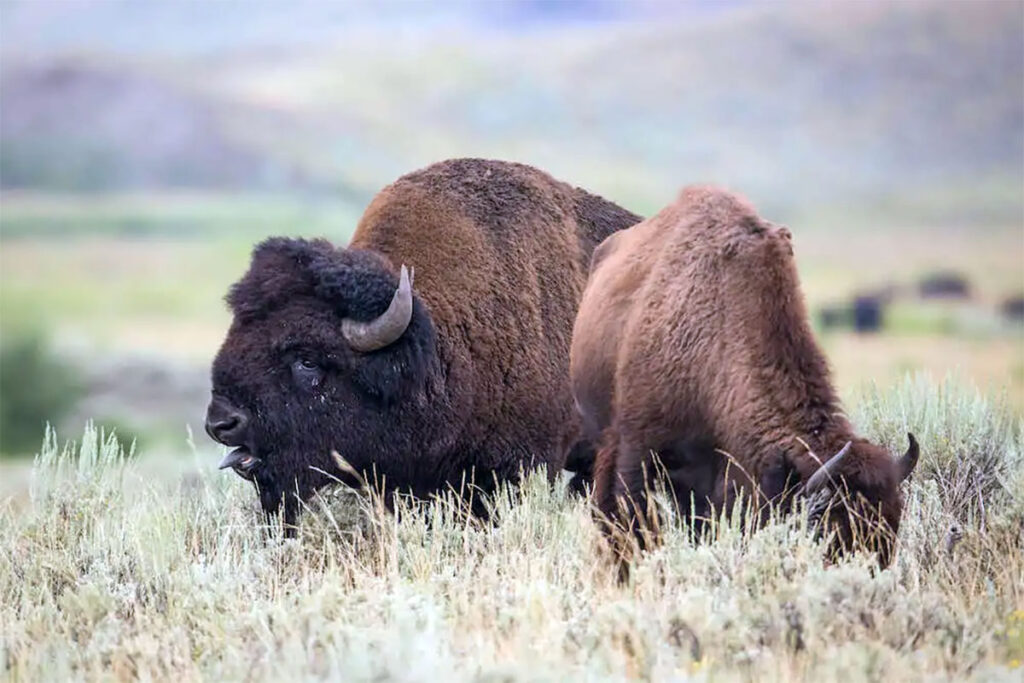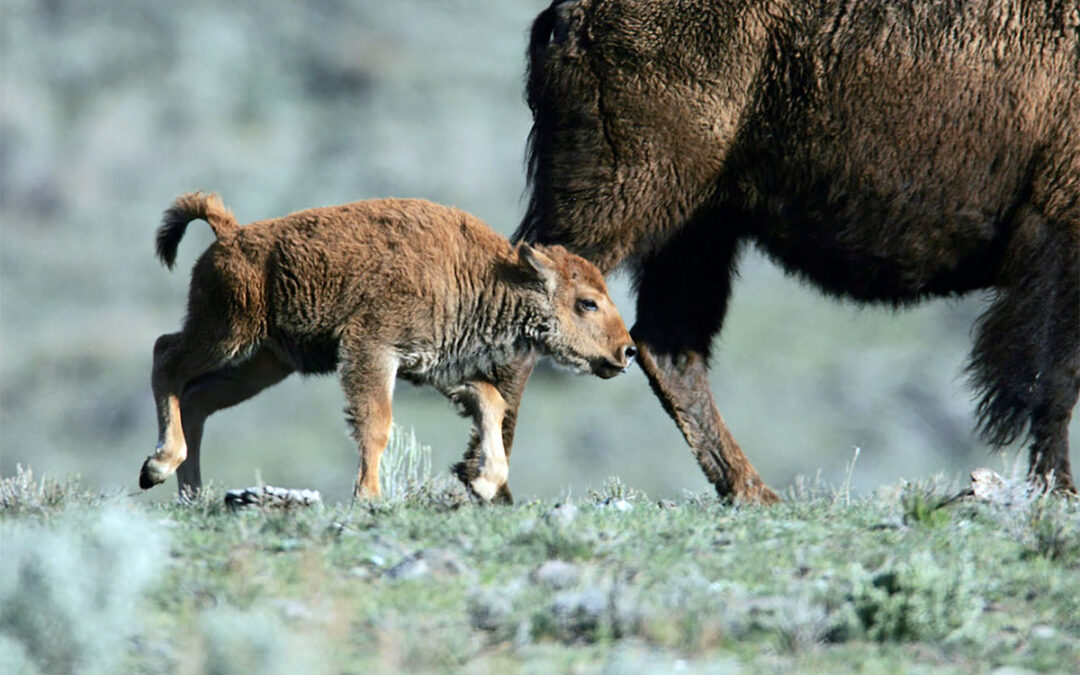Photo: National Park Service
With 2.1 million cattle in Montana, one might expect Governor Gianforte and our congressional delegation to know where cattle actually get brucellosis. But unfortunately, the governor and delegation appear locked into outdated, unscientific, and unsupported false assumptions that wild Yellowstone bison have transmitted brucellosis to cattle. They have not.
The grim result of these false assumptions is that thousands of our nation’s last wild bison are slaughtered when they cross the invisible border of Yellowstone National Park, supposedly to prevent wild bison from infecting private cattle, which can cause cattle to abort.
That, however, is no longer accepted science. The US Department of Agriculture’s Animal and Plant Health Inspection Service commissioned the National Academies of Science, Medicine, and Engineering to undertake an exhaustive study to determine if the Park’s brucellosis management was working.
Contrary to the long-held assumptions, the study found that over the past 20 years it has been wild elk — not wild bison — that transmitted brucellosis to livestock 27 times. Wild bison were not responsible for a single transmission, not one!
Despite being wild animals, Montana classifies and manages wild bison as livestock. Yet, now the state argues that American Prairie Reserve’s bison should not be allowed to graze on Bureau of Land Management’s grazing allotments, even though American Prairie acquired the legal right to use these grazing allotments when they bought the ranches to create and expand the American Prairie Reserve.
This is puzzling since the Montana Department of Livestock requires American Prairie Reserve to test their bison regularly. Unlike wild bison in Yellowstone National Park, the American Prairie bison are 100% brucellosis free.
Because Montana relies on provably false science, it also requires that almost all of the wild bison that cross Yellowstone National Park’s invisible boundaries should be killed. The result is that about one-quarter of Yellowstone’s herd of 5,000 bison are slaughtered in years when deep snow and their genetic instincts for natural migration force them to seek lower elevations for food and more favorable calving habitat.
Tens of millions of wild bison once roamed across western North America. Today, wild bison occupy less than one percent of their former range. In spite of this, the new Yellowstone Bison Management Plan does nothing to expand the bison grazing opportunities on public lands for the 5,000 wild bison that live almost exclusively in the Park. Perhaps that’s because Governor Gianforte sued the National Park Service to force the agency to kill more wild Park bison, falsely believing them a threat to the cattle industry.

Photo: National Park Service
When the Park Service prepared and approved its new bison management plan in 2024, the agency completely ignored the National Academies’ recommendations to switch the focus for brucellosis management in the Greater Yellowstone Area from wild bison to wild elk.
Although the Park Service insists that it used the “best available science,” it appears the agency shares our state’s misconceptions on where cattle actually get brucellosis. Consequently, not a single alternative in the Plan’s Environmental Impact Statement addressed the proven source of brucellosis transmission to livestock, which is elk, not wild bison.
Despite more than 20 years of “capture and slaughter” of tens of thousands of bison — the controversial “management” has failed to reduce the percentage of Yellowstone bison that test positive for brucellosis antibodies. And yet the government just reauthorized the slaughter, which has clearly proven to be ineffective at reducing brucellosis.
The Alliance for the Wild Rockies has taken the Park Service to court to require it to use the best available science and stop the pointless slaughter of our National Mammal. It’s clearly time that Governor Gianforte and our congressional delegation do the same. Wild bison should roam free and all Treaty hunting rights must be respected.
It costs us a lot of money to go to court. Please consider making a donation to the Alliance for the Wild Rockies to help us force the government to make management decisions based on science, not fear.

Photo: National Park Service
Mike Garrity is the Executive Director of the Alliance for the Wild Rockies.
